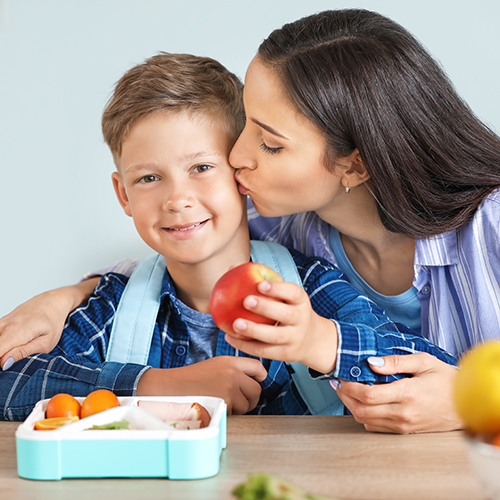21 January 2020
 As the countdown to a new school year begins, many parents will soon find themselves facing the often-arduous task of filling the school lunchbox which, despite the best of intentions, often ends up containing more junk food than nutrition.
As the countdown to a new school year begins, many parents will soon find themselves facing the often-arduous task of filling the school lunchbox which, despite the best of intentions, often ends up containing more junk food than nutrition.
Finding the right balance between ‘always’ and ‘sometimes’ foods is a common challenge for parents, but with unhealthy foods comprising more than a third of the daily energy intake of four to eight-year old Australian children, it’s an issue that must be addressed.
Cutting kids’ consumption of unhealthy food is the focus on a new study by the University of South Australia and Flinders University, where lead researcher and PhD candidate Brittany Johnson says there is clear connection between parents’ motivations, and their children’s intake of unhealthy foods.
“Parents hold the purse strings to the family pantry, which means they can help make a big difference in improving children’s diets,” Johnson says.
“But with statistics showing that kids are eating up to eight times the recommended serves for unhealthy foods– most commonly, cakes, biscuits, savory pastries and takeaways – and, that less than five per cent of Aussie kids eat the recommended daily amount of vegetables – there is certainly scope for changes.”
The imbalance of healthy to unhealthy foods in children’s diets is a serious problem that is contributing to the alarming rise in childhood obesity. Already, one in four Australian children (aged 2-17) are overweight, with global estimates currently at 340 million for children and adolescents (aged 5-19).
Johnson’s research assessed the motivations and behaviours of 495 parents (of three to seven-year-olds) finding that only 50 per cent of parents intend to cut back on their kids’ consumption of unhealthy foods. Johnson says this distinct knowledge-behaviour gap can be improved by boosting parents’ confidence, intention and planning.
“Parents need to believe that they can make changes and remember they are in control. Repeating in your head that you can reduce how much unhealthy foods kids eat and practising this can help,” Johnson says.
“This can be as simple as making a plan before you go to the supermarket, avoiding the confectionary aisle, and being mindful when selecting off-the-shelf school snacks which, while convenient and appealing, are typically jam-packed with fat, sugars, salt and little else.
“To improve children’s diet quality and reduce the risk of chronic conditions we need novel, scalable and effective interventions.
“We must better support parents to make positive changes. This can include providing clear information about unhealthy food recommendations, appropriate portion sizes, the benefits of children eating healthier foods and the impact of unhealthy choices.
“We can all help by making changes to reduce how many unhealthy foods we buy and consume. Only then will we start to see change.”
…………………………………………………………………………………………………………………
Media: Annabel Mansfield: office +61 8 8302 0351 or mobile: +61 417 717 504
email: Annabel.Mansfield@unisa.edu.au
Researcher: Brittany Johnson: email: brittany.johnson@flinders.edu.au




